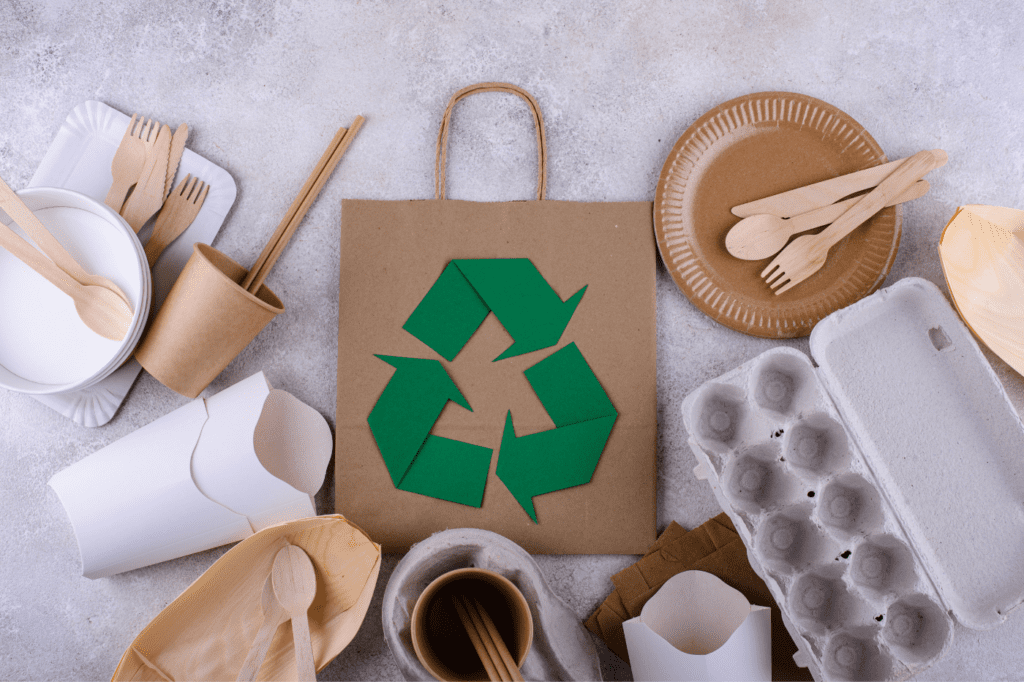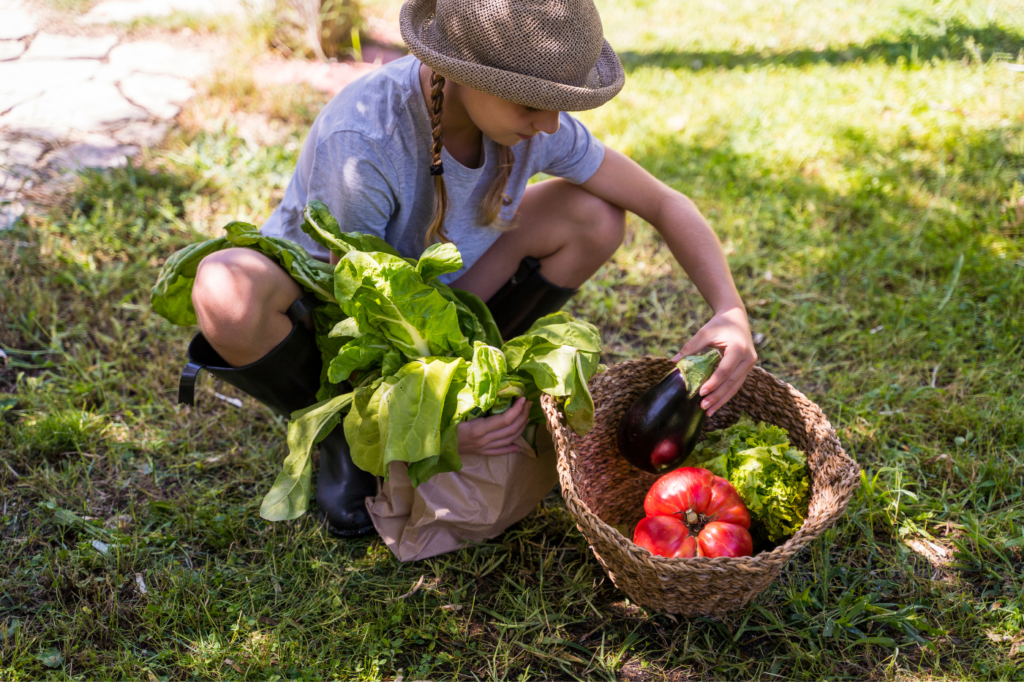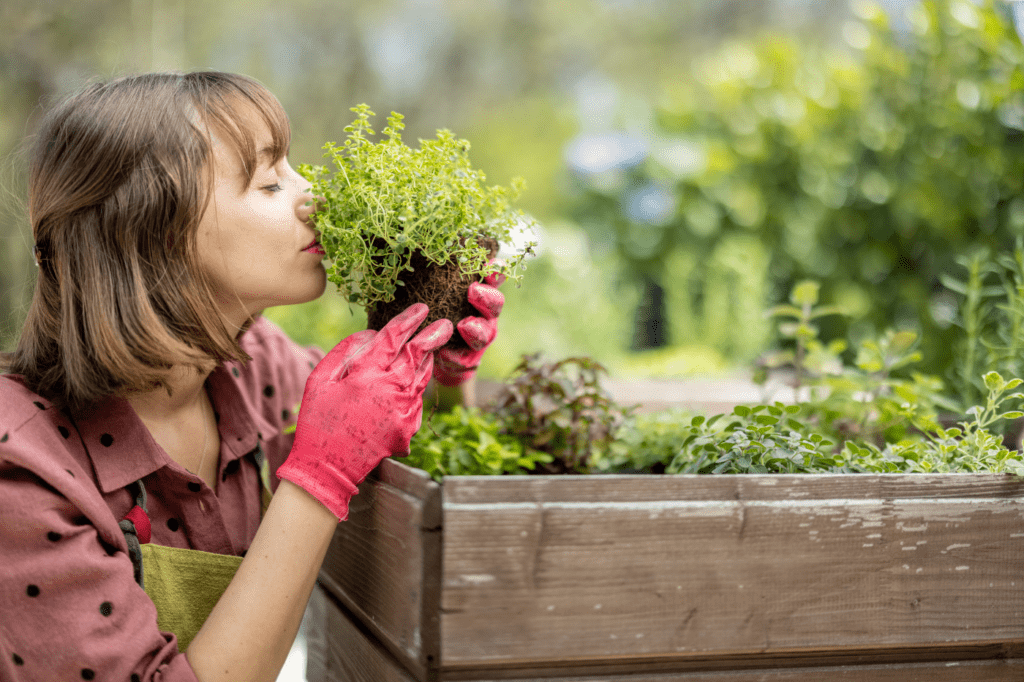Ever wondered how you can make your home more sustainable without turning your life upside down? In a world where eco-conscious living is increasingly crucial, finding practical ways to contribute can be overwhelming.
But fear not! In the next few minutes, we’ll unveil 77+ actionable and hassle-free sustainable living tips for your home. Ready to make a positive change? Let’s dive in and turn your home into an eco-friendly haven!
What is meant by sustainable living?

Sustainable living involves adopting practices that minimize environmental impact, promote social equity, and ensure economic viability for future generations.
It’s a lifestyle that seeks harmony between personal choices and the well-being of the planet.
What does sustainable living involve?
- Mindful Consumption: Choosing products with minimal environmental impact.
- Reducing Waste: Minimizing single-use items and embracing recycling.
- Conserving Resources: Opting for energy-efficient options and sustainable practices.
- Social Responsibility: Supporting ethical and fair trade practices.
- Balanced Lifestyle: Striking a balance between personal needs and environmental considerations.
Is it easy to be sustainable?
Embracing sustainable living may seem daunting initially, but with awareness and small, intentional steps, it becomes an accessible and rewarding journey. While challenges exist, the positive impact on the planet and personal well-being makes the effort worthwhile.
How to make sustainable living easier:
- Start Small: Incorporate gradual changes into your daily routine.
- Educate Yourself: Stay informed about sustainable practices.
- Community Engagement: Connect with like-minded individuals for support.
- Set Realistic Goals: Establish achievable milestones on your sustainability path.
- Celebrate Progress: Acknowledge and celebrate your sustainable achievements.
What does living sustainably look like?
Living sustainably involves mindful consumption, waste reduction, and a commitment to ethical practices.
The good news? It’s not only achievable but also incredibly rewarding.
some sustainable living examples:
- Eco-Friendly Transportation: Opt for walking, cycling, or using public transport.
- Green Energy Sources: Use renewable energy options (like solar energy) when possible.
- Local and Seasonal Foods: Support local farmers and reduce your carbon footprint.
- Minimalist Living: Embrace a clutter-free life, focusing on essentials.
- Connection with Nature: Spend time outdoors and appreciate the natural world.
Stay tuned for 77+ helpful tips for a sustainable lifestyle coming up in our blog post!
77+ Helpful Sustainable Living Tips
Sustainable living tips for your kitchen

Here are 10 sustainable living tips for your kitchen, each with a brief description and how-to guide:
1. Compost Your Kitchen Scraps:
- Description: Reduce food waste by composting kitchen scraps. Compost enriches soil, reduces landfill waste, and minimizes the need for chemical fertilizers.
- How-to: Set up a compost bin for fruit and vegetable peels, coffee grounds, and eggshells. Turn the compost regularly for optimal decomposition.
2. Switch to Reusable Food Storage:
- Description: Ditch single-use plastic bags and containers. Opt for reusable food storage solutions to minimize plastic waste.
- How-to: Invest in glass or stainless steel containers and beeswax wraps. They are durable, eco-friendly, and easy to clean.
3. Choose Local and Seasonal Produce:
- Description: Support local farmers and reduce your carbon footprint by choosing locally grown, seasonal produce.
- How-to: Visit farmers’ markets or join a community-supported agriculture (CSA) program. Check seasonal produce guides for your region.
4. Reduce Meat Consumption:
- Description: Lower your environmental impact by reducing meat consumption. Plant-based diets are not only eco-friendly but also promote better health.
- How-to: Incorporate meatless meals into your weekly menu. Experiment with plant-based protein sources like legumes and tofu.
5. Invest in Sustainable Kitchen Utensils:
- Description: Choose kitchen tools made from sustainable materials like bamboo or recycled plastic.
- How-to: Replace plastic utensils with bamboo alternatives. Look for brands committed to eco-friendly materials and ethical manufacturing.
6. Conserve Water:
- Description: Save water by adopting simple practices in the kitchen. Conserving water helps reduce your overall environmental impact.
- How-to: Fix any leaks, use a dishwasher efficiently, and collect rainwater for plants. Only run the dishwasher when it’s full.
7. Ditch Single-Use Plastics:
- Description: Cut down on single-use plastics, such as disposable cutlery, straws, and packaging.
- How-to: Carry a reusable water bottle, use a stainless steel straw, and choose products with minimal or plastic-free packaging.
8. Energy-Efficient Appliances:
- Description: Opt for energy-efficient kitchen appliances to reduce electricity consumption.
- How-to: When purchasing new appliances, look for the Energy Star label. Use appliances wisely and unplug them when not in use.
9. Grow Your Own Herbs:
- Description: Cultivate a small herb garden at home to enjoy fresh, pesticide-free herbs.
- How-to: Choose a sunny spot, use compost for soil enrichment, and select herbs you frequently use in your cooking. Water consistently and enjoy a sustainable, homegrown herb supply.
10. Mindful Grocery Shopping:
- Description: Make conscious choices while grocery shopping to minimize packaging and food waste.
- How-to: Bring reusable bags, buy in bulk to reduce packaging, and check expiration dates to avoid food waste. Plan meals to use ingredients efficiently.
By incorporating these sustainable practices into your kitchen routine, you contribute to a greener, more eco-friendly lifestyle.
Sustainable living tips for your bathroom

Here are 10 sustainable living tips for your bathroom, each with a brief description and how-to guide:
1. Switch to Solid Toiletries:
- Description: Reduce plastic waste by opting for solid toiletries like shampoo bars, soap bars, and toothpaste tablets.
- How-to: Purchase solid alternatives in minimal or compostable packaging. They’re convenient, long-lasting, and eco-friendly.
2. Install a Low-Flow Showerhead:
- Description: Conserve water by installing a low-flow showerhead, which reduces water usage without compromising water pressure.
- How-to: Replace your current showerhead with a low-flow option. Many models are easy to install without professional help.
3. Choose Bamboo Toothbrushes:
- Description: Replace plastic toothbrushes with bamboo alternatives, which are biodegradable and sustainable.
- How-to: Purchase bamboo toothbrushes from eco-friendly brands. Dispose of them by removing the bristles and composting the handle.
4. Use Reusable Cotton Rounds:
- Description: Reduce single-use waste by switching to reusable cotton rounds for makeup removal or skincare.
- How-to: Invest in washable cotton rounds or make your own from old, soft fabrics. Simply wash and reuse.
5. Opt for Eco-Friendly Toilet Paper:
- Description: Choose toilet paper made from recycled materials or bamboo to reduce the environmental impact.
- How-to: Look for brands committed to sustainable sourcing. Bamboo toilet paper is an excellent alternative to traditional tree-based options.
6. Embrace Eco-Friendly Cleaning Products:
- Description: Use environmentally friendly cleaning products to minimize chemical exposure and reduce packaging waste.
- How-to: Choose eco-friendly bathroom cleaners or make your own using simple ingredients like vinegar, baking soda, and essential oils.
7. Collect Rainwater for Flushing:
- Description: Conserve water by collecting rainwater in a bucket and using it for flushing the toilet.
- How-to: Place a bucket under a downspout during rainfall. Use the collected water to flush the toilet, reducing reliance on tap water.
8. DIY Natural Beauty Products:
- Description: Make your own beauty products using natural ingredients to reduce reliance on commercially produced items.
- How-to: Explore simple DIY recipes for items like face masks, scrubs, and hair treatments. This minimizes packaging and ensures knowledge of the ingredients used.
9. Invest in a Bidet Attachment:
- Description: Reduce toilet paper consumption by using a bidet attachment for more sustainable and hygienic bathroom practices.
- How-to: Install a bidet attachment to your existing toilet. It’s cost-effective and decreases reliance on toilet paper.
10. Recycle Bathroom Products:
- Description: Set up a recycling station in your bathroom for items like empty shampoo bottles, toilet paper rolls, and packaging.
- How-to: Place a designated recycling bin in your bathroom. Familiarize yourself with local recycling guidelines to ensure proper disposal.
Incorporating these practices into your sustainable bathroom routine contributes to a more environmentally friendly and mindful lifestyle.
Sustainable living tips for cleaning

Here are 10 sustainable living tips for cleaning, each with a brief description and how-to guide:
1. Make Your Own Cleaning Products:
- Description: Reduce reliance on commercial cleaners by making your own using simple, eco-friendly ingredients.
- How-to: Mix vinegar, baking soda, and essential oils for a multipurpose cleaner. Customize with lemon for a fresh scent and antibacterial properties.
2. Use Reusable Cleaning Cloths:
- Description: Ditch disposable wipes and paper towels for reusable cleaning cloths to minimize waste.
- How-to: Invest in washable cleaning cloths or repurpose old, soft fabrics. Wash and reuse to cut down on single-use items.
3. Choose Concentrated Cleaning Products:
- Description: Opt for concentrated cleaning solutions to reduce packaging waste and transportation carbon footprint.
- How-to: Look for cleaning products in concentrate form. Dilute as per instructions to create ready-to-use solutions.
4. Borrow from Nature:
- Description: Harness the power of natural elements like lemon, vinegar, and baking soda for effective cleaning without harsh chemicals.
- How-to: Use lemon for cutting through grease, vinegar for disinfecting, and baking soda for scrubbing surfaces. They’re effective and environmentally friendly.
5. Invest in Eco-Friendly Cleaning Tools:
- Description: Choose sustainable cleaning tools such as bamboo brushes, recycled plastic scrubbers, and natural fiber brooms.
- How-to: Replace conventional cleaning tools with eco-friendly alternatives. They are durable, effective, and kinder to the environment.
6. Practice Minimalism in Cleaning Supplies:
- Description: Streamline your cleaning routine by using fewer, high-quality products to reduce clutter and waste.
- How-to: Declutter your cleaning supplies and keep only the essentials. Choose versatile products that serve multiple purposes.
7. Switch to Microfiber Cloths:
- Description: Opt for microfiber cloths that require less cleaning solution, reducing the need for excess chemicals.
- How-to: Use microfiber cloths for dusting and cleaning surfaces. They are highly absorbent and effective without the need for additional cleaning agents.
8. Avoid Air Fresheners with Harmful Chemicals:
- Description: Opt for natural alternatives like essential oils or open windows for fresh air rather than synthetic air fresheners.
- How-to: Use a few drops of essential oils on a cotton ball or diffuser for a pleasant aroma. Ventilate your home regularly to improve indoor air quality.
9. Recycle Cleaning Containers:
- Description: Properly recycle empty cleaning product containers to reduce landfill waste.
- How-to: Check local recycling guidelines for cleaning product containers. Rinse them thoroughly before recycling.
10. Practice Water Conservation:
- Description: Conserve water during cleaning activities by using a bucket instead of running water continuously.
- How-to: Fill a bucket with water for mopping or cleaning surfaces instead of leaving the tap running. This minimizes water usage.
Incorporating these sustainable cleaning practices not only promotes a healthier living environment but also contributes to a more eco-friendly and mindful lifestyle.
Sustainable living tips for kids

Here are 10 sustainable living tips for kids, each with a brief description and how-to guide:
1. Encourage Outdoor Play:
- Description: Foster a love for nature by encouraging kids to play outdoors. It promotes physical activity and a deeper connection with the environment.
- How-to: Plan nature walks, picnics, or simple outdoor games. Provide opportunities for unstructured play in natural settings.
2. Teach Water Conservation:
- Description: Instill a sense of responsibility for water usage by teaching kids to conserve water in their daily activities.
- How-to: Encourage shorter showers, turning off the tap while brushing teeth, and fixing any leaks. Discuss the importance of water conservation.
3. Eco-Friendly School Supplies:
- Description: Choose sustainable school supplies, such as recycled paper, bamboo pencils, and reusable lunch containers.
- How-to: Involve kids in selecting eco-friendly supplies. Discuss the benefits of using materials that are kinder to the planet.
4. Waste Sorting Education:
- Description: Teach kids about waste sorting and the importance of recycling and composting.
- How-to: Set up recycling and compost bins at home. Explain the different types of waste and where each item belongs.
5. Create a Kitchen Garden:
- Description: Cultivate a small kitchen garden to teach kids about growing food, the importance of fresh produce, and the environmental impact of food choices.
- How-to: Involve kids in planting and caring for herbs or vegetables. Discuss the lifecycle of plants and the benefits of homegrown food.
6. Upcycling Art Projects:
- Description: Foster creativity and environmental awareness by engaging kids in upcycling art projects using discarded materials.
- How-to: Collect items like cardboard, plastic containers, or old magazines. Encourage kids to create art or craft projects from these materials.
7. Energy-Saving Practices:
- Description: Teach kids about the importance of saving energy by turning off lights, electronics, and appliances when not in use.
- How-to: Create a fun “lights off” routine before bedtime. Explain how saving energy contributes to a healthier planet.
8. Nature Appreciation Activities:
- Description: Develop a love for nature by engaging in activities like bird watching, plant identification, or nature journaling.
- How-to: Plan weekend nature outings or set up a bird feeder in the backyard. Encourage kids to observe and document their natural surroundings.
9. Reduce Single-Use Items:
- Description: Instill the habit of reducing single-use items by using reusable water bottles, lunch containers, and cloth bags.
- How-to: Involve kids in selecting and personalizing their reusable items. Explain the environmental impact of minimizing single-use plastics.
10. Practice Mindful Consumption:
- Description: Teach kids about making thoughtful and sustainable choices when purchasing toys, clothing, and other items.
- How-to: Discuss the concept of mindful consumption. Encourage kids to think about whether they really need a new item and how it was made.
By incorporating these sustainable living tips into daily routines and making these practices enjoyable and engaging helps instill lifelong habits that contribute to a more sustainable future.
Sustainable living tips for pet owners

Here are 10 sustainable living tips for pet owners, each with a brief description and how-to guide:
1. Choose Sustainable Pet Food:
- Description: Opt for pet food brands that use responsibly sourced ingredients, have eco-friendly packaging, and prioritize ethical practices.
- How-to: Research and select pet food brands committed to sustainability and ethical sourcing. Consider locally sourced options to reduce the carbon footprint.
2. Eco-Friendly Pet Toys:
- Description: Select pet toys made from sustainable materials to minimize environmental impact.
- How-to: Look for toys made from natural fibers, recycled materials, or those labeled as eco-friendly. Avoid toys with excessive packaging.
3. Use Biodegradable Waste Bags:
- Description: Switch to biodegradable waste bags for pet waste cleanup to reduce plastic pollution.
- How-to: Purchase waste bags made from biodegradable materials. Dispose of pet waste in designated compost bins when possible.
4. Choose Sustainable Pet Products:
- Description: Select pet products like beds, bowls, and grooming tools made from sustainable materials.
- How-to: Look for items made from bamboo, recycled plastic, or other eco-friendly materials. Support companies with transparent sustainability practices.
5. Homemade Pet Treats:
- Description: Prepare homemade pet treats using natural and organic ingredients to reduce packaging waste.
- How-to: Find simple and pet-safe recipes for treats using ingredients like oats, peanut butter, and fruits. Store treats in reusable containers.
6. DIY Pet Grooming:
- Description: Opt for at-home grooming to minimize water usage and reduce the environmental impact of professional grooming services.
- How-to: Learn basic grooming techniques for your pet, such as brushing and nail trimming. Use eco-friendly grooming products.
7. Adopt, Don’t Shop:
- Description: Consider adopting a pet from a shelter rather than purchasing from a breeder. This reduces the demand for breeding and supports animal welfare.
- How-to: Visit local animal shelters or rescue organizations to find pets in need of loving homes.
8. Use Eco-Friendly Litter:
- Description: Choose cat litter made from sustainable materials, such as recycled paper or natural fibers.
- How-to: Experiment with different eco-friendly cat litters to find one that suits your cat’s preferences. Dispose of used litter responsibly.
9. Invest in Durable Pet Products:
- Description: Choose durable and long-lasting pet products to minimize the need for frequent replacements.
- How-to: Read reviews and select high-quality pet products. While the initial cost might be higher, it often pays off in longevity and reduced environmental impact.
10. Participate in Pet-Focused Environmental Initiatives:
- Description: Get involved in or support initiatives that promote sustainability in the pet industry or contribute to environmental conservation efforts.
- How-to: Join local pet-related environmental groups, participate in clean-up events, or support organizations working towards sustainable pet practices.
By incorporating these sustainable living tips, pet owners can make choices that not only benefit their pets but also contribute to a more environmentally friendly and responsible lifestyle.
Sustainable living tips for shopping

Here are 10 sustainable living tips for shopping, each with a brief description and how-to guide:
1. Prioritize Second-Hand and Thrifting:
- Description: Choose second-hand items and thrift stores to reduce demand for new production and extend the lifespan of products.
- How-to: Explore thrift stores, online second-hand platforms, or attend local swap events. Embrace the thrill of finding unique, pre-loved items.
2. Support Sustainable Brands:
- Description: Research and support brands committed to sustainability, ethical practices, and transparency in their supply chains.
- How-to: Look for certifications, read brand ethics statements, and choose companies with a clear commitment to environmental and social responsibility.
3. Bring Your Own Bags:
- Description: Eliminate the need for single-use plastic bags by bringing your reusable bags for shopping.
- How-to: Keep reusable bags in your car or by the door for easy access. Invest in durable, foldable bags for convenience.
4. Buy in Bulk:
- Description: Reduce packaging waste by purchasing items in bulk. This minimizes single-use packaging and often comes with cost savings.
- How-to: Bring your reusable containers to bulk stores or use provided reusable bags. Opt for larger quantities to reduce packaging per unit.
5. Choose Local and Seasonal Products:
- Description: Support local farmers and reduce the carbon footprint of your food by choosing local and seasonal products.
- How-to: Shop at farmers’ markets, join a community-supported agriculture (CSA) program, and check product labels for origin and seasonality.
6. Ditch Fast Fashion:
- Description: Avoid fast fashion and opt for quality, timeless pieces that are ethically produced and have a longer lifespan.
- How-to: Research and choose sustainable fashion brands. Embrace a minimalist wardrobe and prioritize quality over quantity.
7. Say No to Single-Use Plastics:
- Description: Refuse single-use plastics, such as straws, cutlery, and water bottles, to minimize plastic pollution.
- How-to: Carry a reusable water bottle, stainless steel straw, and bamboo cutlery. Politely decline single-use plastic items when offered.
8. Mindful Consumption:
- Description: Practice mindful consumption by evaluating whether you truly need a new item before making a purchase.
- How-to: Create a shopping list and stick to it. Avoid impulse buying and consider the long-term value and necessity of each purchase.
9. Upcycled and Recycled Products:
- Description: Choose products made from upcycled or recycled materials to support the circular economy.
- How-to: Look for items labeled as recycled or made from reclaimed materials. These products often have a lower environmental impact.
10. Be Conscious of Packaging:
- Description: Choose products with minimal or eco-friendly packaging to reduce waste.
- How-to: Read product labels and choose items with minimal, recyclable, or compostable packaging. Consider buying products in glass or paper packaging.
By adopting these sustainable shopping practices, you contribute to a more environmentally friendly and socially responsible consumer lifestyle.
Sustainable living tips for your garden

Here are 10 sustainable living tips for your garden, each with a brief description and how-to guide:
1. Composting:
- Description: Start a composting system to turn kitchen scraps and yard waste into nutrient-rich compost for your garden.
- How-to: Collect kitchen scraps (fruit peels, coffee grounds) and yard waste in a compost bin. Turn the compost regularly for proper aeration.
2. Water Conservation:
- Description: Conserve water in your garden by using techniques such as drip irrigation, mulching, and collecting rainwater.
- How-to: Install a drip irrigation system to target plant roots efficiently. Mulch around plants to retain soil moisture. Set up rain barrels to collect rainwater for watering.
3. Native Plants and Biodiversity:
- Description: Choose native plants to support local ecosystems and encourage biodiversity in your garden.
- How-to: Research native plants for your region. Create a garden plan that includes a variety of plants to attract different pollinators and beneficial insects.
4. Chemical-Free Pest Control:
- Description: Use natural pest control methods and avoid chemical pesticides to protect the health of your garden and local wildlife.
- How-to: Introduce beneficial insects, like ladybugs, use companion planting, and make DIY pest control solutions with ingredients like neem oil and garlic.
5. Rain Gardens:
- Description: Design a rain garden to manage stormwater runoff, reduce erosion, and enhance water absorption in your yard.
- How-to: Identify low-lying areas prone to water pooling. Plant native species with good water absorption capabilities.
6. Upcycled Garden Decor:
- Description: Add creative and sustainable elements to your garden by repurposing old items as garden decor.
- How-to: Turn old pallets into vertical planters, use vintage containers for potted plants, or repurpose old furniture as garden seating.
7. Natural Fertilizers:
- Description: Avoid synthetic fertilizers and opt for natural alternatives like compost, manure, or organic fertilizers.
- How-to: Amend soil with compost regularly. Use well-aged manure or create compost tea for a nutrient boost.
8. Permaculture Principles:
- Description: Apply permaculture principles such as companion planting, polyculture, and using natural patterns to create a self-sustaining garden ecosystem.
- How-to: Design your garden with diversity in mind. Plant complementary species that benefit each other and create a resilient, balanced system.
9. DIY Garden Tools:
- Description: Reduce your carbon footprint by making or upcycling garden tools instead of buying new ones.
- How-to: Create a garden toolshed with repurposed items or refurbish old tools. DIY projects like making a rain barrel or compost bin can also be rewarding.
10. Garden for Wildlife:
- Description: Create a garden that welcomes and sustains local wildlife, including birds, bees, butterflies, and beneficial insects.
- How-to: Install bird feeders and bird baths, plant nectar-rich flowers for pollinators, and provide habitat elements like rocks and logs for insects.
By incorporating these sustainable practices into your garden, you not only create a beautiful outdoor space but also contribute to a healthier and more eco-friendly environment.
Sustainable living tips for travel

Here are 10 sustainable living tips for travel, each with a brief description and how-to guide:
1. Choose Eco-Friendly Accommodations:
- Description: Opt for hotels, hostels, or vacation rentals that have eco-friendly practices, such as energy conservation, waste reduction, and water-saving initiatives.
- How-to: Research accommodations with green certifications or those committed to sustainable practices. Look for options that minimize environmental impact.
2. Use Public Transportation:
- Description: Reduce your carbon footprint by using public transportation, such as buses, trains, and subways, instead of renting a car or taking individual taxis.
- How-to: Plan your itinerary to include public transportation. Explore walking or cycling in local areas whenever possible.
3. Pack Light:
- Description: Pack efficiently and travel with fewer items to decrease the weight of your luggage, which, in turn, reduces fuel consumption during transportation.
- How-to: Create a minimalist packing list. Choose versatile clothing items and essentials, and consider doing laundry during longer trips.
4. Bring a Reusable Water Bottle:
- Description: Minimize single-use plastic waste by carrying a reusable water bottle and refilling it throughout your journey.
- How-to: Pack a durable, BPA-free water bottle. Fill it up at water fountains, restaurants, or your accommodation to stay hydrated sustainably.
5. Eat Local and Sustainable:
- Description: Support local businesses and reduce your travel carbon footprint by choosing locally sourced and sustainable food options.
- How-to: Explore local markets, eateries, and farm-to-table restaurants. Ask about the origin of ingredients and choose sustainable seafood options.
6. Respect Local Cultures and Environments:
- Description: Be mindful of local customs, traditions, and natural environments. Leave a positive impact by respecting and preserving the places you visit.
- How-to: Research local customs before your trip. Avoid actions that may disturb local wildlife or damage natural habitats.
7. Offset Your Carbon Emissions:
- Description: Consider offsetting the carbon emissions of your travel by investing in carbon offset programs that support renewable energy or conservation projects.
- How-to: Calculate your travel carbon footprint using online calculators and choose reputable carbon offset programs to contribute to positive environmental initiatives.
8. Use Sustainable Transportation Options:
- Description: If possible, choose more sustainable transportation options, such as electric or hybrid vehicles, bikes, or electric scooters.
- How-to: Explore eco-friendly transportation options available at your destination. Use bike-sharing programs or rent electric vehicles for short distances.
9. Leave No Trace:
- Description: Practice responsible tourism by leaving no trace behind. Dispose of waste properly and avoid disturbing natural ecosystems.
- How-to: Carry a small reusable trash bag, dispose of waste in designated bins, and follow the “Leave No Trace” principles, especially in natural areas.
10. Support Responsible Tour Operators:
- Description: Choose tour operators and activities that prioritize environmental conservation, cultural preservation, and responsible tourism practices.
- How-to: Research and book excursions with companies that have certifications or policies promoting sustainable and responsible tourism.
By adopting these sustainable travel practices, you can enjoy enriching experiences while minimizing your impact on the environment and supporting the well-being of local communities.
Sustainable living tips for energy consumption (renewable energy)

Here are 10 sustainable living tips for energy consumption, each with a brief description and how-to guide:
1. Embrace Solar Energy:
- Description: Harness the power of the sun by investing in solar panels for your home. This renewable energy source not only reduces your carbon footprint but also leads to long-term cost savings on your energy bills. Learn more about determining the number of solar panels needed for your house here.
- How-to: Consult with reputable solar energy providers to assess your home’s solar potential. Consider factors like roof space, local sunlight conditions, and your energy needs. Install the appropriate number of solar panels to generate clean, sustainable electricity.
2. Invest in Solar Water Heaters:
- Description: Enhance your home’s sustainability by installing a solar water heater. This eco-friendly technology utilizes sunlight to heat water, reducing the need for conventional energy sources. Solar water heaters are a practical and energy-efficient solution for households looking to minimize their environmental impact.
- How-to: Evaluate your hot water usage and consult with professionals to determine the appropriate solar water heater system for your needs. Install solar collectors on your roof to capture sunlight, and connect them to a water storage tank for a reliable and renewable hot water supply. Learn more about solar water heaters here.
3. Opt for Energy-Efficient Appliances:
- Description: Upgrade to appliances with high energy efficiency ratings to complement your renewable energy efforts. Energy-efficient appliances not only reduce electricity consumption but also contribute to a more sustainable and cost-effective home.
- How-to: When purchasing new appliances, look for the Energy Star label or similar certifications that indicate high energy efficiency. Consider replacing outdated appliances with newer, more efficient models to maximize energy savings.
4. Explore Wind Turbines:
- Description: If your location permits, consider integrating small-scale wind turbines into your renewable energy strategy. Wind power can be a valuable addition to your energy mix, especially in areas with consistent wind patterns.
- How-to: Conduct a feasibility study to assess the wind potential of your location. Consult with experts or local authorities to determine the best size and type of wind turbine for your property. Ensure compliance with any regulations or permits required for wind turbine installation.
BONUS: Sustainable living tips for the holidays

Here are 10 sustainable living tips for the holidays, each with a brief description and how-to guide:
1. Eco-Friendly Gift Giving:
- Description: Choose sustainable and thoughtful gifts, such as experiences, handmade items, or products from eco-friendly brands.
- How-to: Consider giving gifts that promote sustainable living, like reusable water bottles, eco-friendly beauty products, or experiences like workshops or classes.
2. Wrapping Paper Alternatives:
- Description: Skip traditional wrapping paper, which often contains non-recyclable materials, and opt for alternatives like recycled paper, fabric, or reusable gift bags.
- How-to: Wrap gifts in newspaper, old maps, or fabric scraps. Invest in reusable fabric gift bags that can be used for multiple occasions.
3. Energy-Efficient Decorations:
- Description: Choose LED lights and energy-efficient decorations to minimize energy consumption during the holiday season.
- How-to: Invest in LED string lights and decorations with the ENERGY STAR label. Use timers to automatically turn off lights when not needed.
4. DIY Decorations:
- Description: Create your own holiday decorations using recycled materials or items found in nature to reduce waste and embrace a personalized touch.
- How-to: Craft decorations from recycled paper, pinecones, twigs, and other natural materials. Involve family members in the creative process.
5. Opt for Sustainable Wrapping:
- Description: Use sustainable wrapping options, such as reusable fabric, scarves, or even kitchen towels, to reduce the amount of waste generated during the holidays.
- How-to: Explore creative wrapping alternatives that can be reused, such as fabric scraps tied with twine or decorated with natural elements.
6. Mindful Consumption of Food:
- Description: Plan meals carefully to minimize food waste and consider choosing locally sourced, organic, or plant-based options for holiday feasts.
- How-to: Create a detailed shopping list, store leftovers properly, and choose recipes that can be easily adapted to utilize available ingredients.
7. Gift Experiences:
- Description: Instead of physical gifts, consider giving the gift of experiences, such as concert tickets, spa days, or online courses, to create lasting memories.
- How-to: Research experiences that align with the recipient’s interests. Purchase tickets or create personalized “experience” coupons.
8. Donation in Lieu of Gifts:
- Description: Encourage a spirit of giving by suggesting donations to charities or nonprofits in lieu of traditional gifts.
- How-to: Inform friends and family of your preference for charitable donations. Choose organizations aligned with your values and the recipient’s interests.
9. Mindful Travel Planning:
- Description: If traveling during the holidays, consider eco-friendly transportation options, pack light, and explore sustainable accommodations.
- How-to: Use public transportation, carpool, or choose direct flights to minimize carbon emissions. Look for eco-certified hotels or vacation rentals.
10. Embrace Minimalism:
- Description: Opt for a minimalist approach to holiday decorations and gift-giving to reduce both physical and environmental clutter.
- How-to: Prioritize quality over quantity when selecting gifts. Consider a “one meaningful gift” approach and focus on spending time together rather than material possessions.
By incorporating these sustainable living tips into your holiday celebrations, you can create a more eco-friendly and meaningful season.
Conclusion
In wrapping up, turning your home into a sustainable haven isn’t just about being eco-friendly—it’s a journey that simplifies your life, slashes energy bills, and lessens your impact on the planet.
Your call to action: choose a few tips, implement them, and witness the positive change. Your home, your impact. Let’s make it sustainable. Start now.








